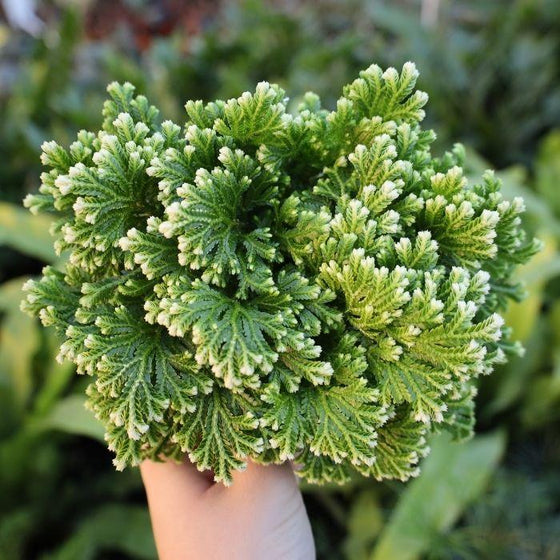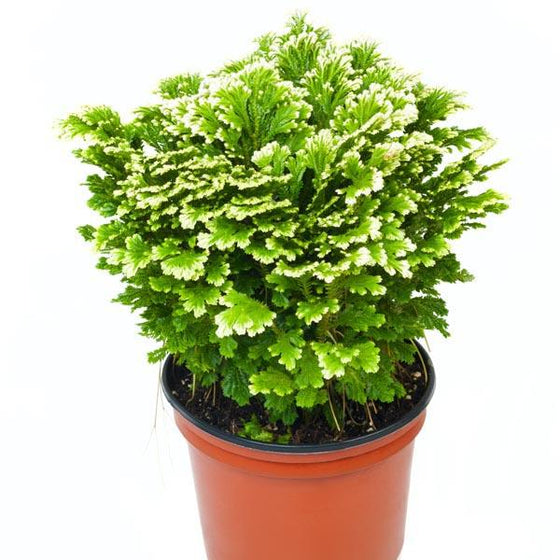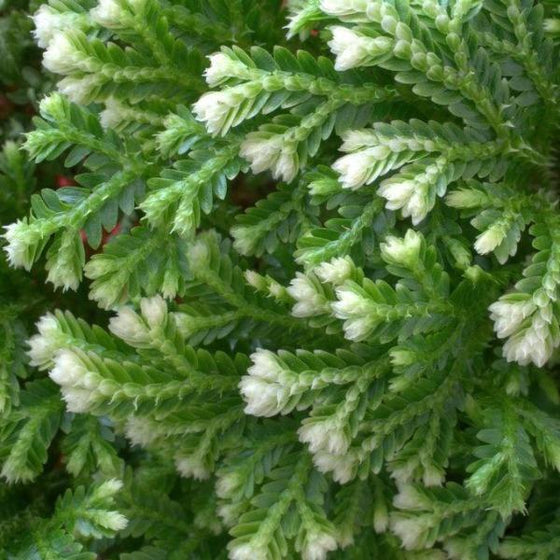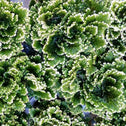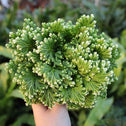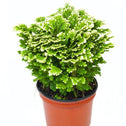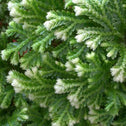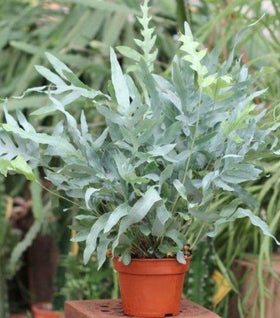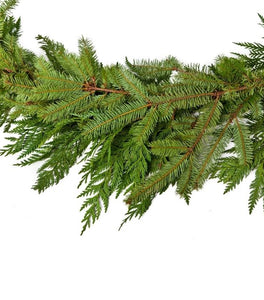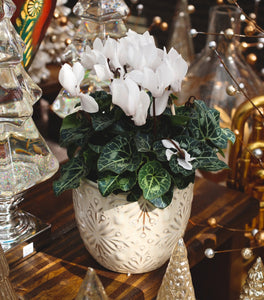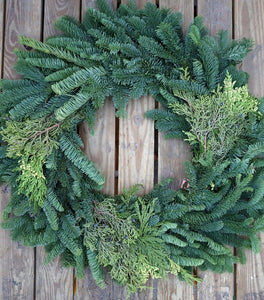Images Depict Mature Plants
Frosty Ferns for Sale Online
Frosty Ferns (Selaginella kraussiana or Selaginella martensii) are petite houseplants whose unique foliage has made them a popular holiday decoration. These beautiful houseplants look like they have been kissed by soft winter snow. These frosted tips are actually new leaves growing at the edge of old.
Contrary to what the name suggests, they are not actually ferns, but rather spike mosses. We have an assortment of variations of frosty ferns that can be sent out and at this time and we can not promise a customer a certain kind. Some have foliage that stands straight up, while others spillover, but all are equally as beautiful!
Frosty Ferns thrive when placed in shady locations, but can tolerate some morning sun but not much more. While it is generally used as a houseplant, it can be planted outside in the true Southern States.
As most shade plants do, these "ferns" love water and should be watered twice a week during its growing season. During the winter, when they are not growing as much, their watering can be limited to once a week. However, the soil should not get soggy, as this can lead to root rot. A simple finger test can help you determine if the Frosty Fern needs water. As always, water at the base of the plant, intentionally not watering the leaves. Wet leaves are more susceptible to burning.
| Hardiness Zone: | 6-9 |
|---|---|
| Mature Height: | 8 to 12 Inches |
| Mature Width: | 8 to 12 Inches |
| Classification: | Houseplant |
| Sunlight: | Fluorescent to bright indirect |
| Habit: | Low mounding |
| Flower Color: | Does not flower |
| Foliage: | Green, fern-like foliage with white variegation |
| Soil Condition: | Moist, well-drained |
| Water Requirements: | They prefer to be watered with distilled or filtered water. They do not like hard water |
| Uses: | Holiday decor. Attractive plant to be featured or in the background of any room in the house, does well with minimal care |
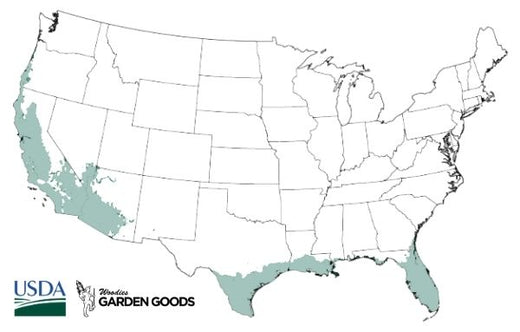
How to Care for Frosty Ferns
Before you buy a Norfolk Island Pine Tree, make sure to read about the care instructions that are required and recommended to keep this plant healthy and thriving.

What is the best soil for Norfolk Island Pine Trees?
The best soil for Norfolk Island Pine Trees is a well balanced mix of peat moss, perlite and vermiculite that dries some between watering but takes a long time to compact. Typically, any reputable potting mix will work well and includes those ingredients. Adding a granular, slow release fertilizer while planting is a good way to help the plant thrive in the transplanting transition.

What is the best light for Norfolk Island Pine Trees?
Norfolk Island Pine Trees do well in bright, indirect light with high humidity. They can handle some direct light, but prefer shadier spots. If your Norfolk Island Pine is not receiving enough light, you will start to see yellowing leaves and sagging branches. Too much light will cause the plant to sunburn.
How do I fertilize Norfolk Island Pine Trees?
Indoor houseplant fertilizers fall into two groups: water soluble, liquid quick release, and granular, slow release fertilizers both types work equally well on Norfolk Island Pine Trees. Jack's Classic Indoor plant food works well as a powder, quick release fertilizer that is mixed with water to quickly provide nutrients to a plant that has been in a container for an extended time. Osmocote Indoor/Outdoor is an option as a granular, slow release fertilizer that can be applied while potting and planting. Any type of fertilizer offers nutrients that help plants with the transition to a new environment.
How do I water Norfolk Island Pine Trees?
Norfolk Island Pine Trees should be watered relatively infrequently, as the plants like to dry out some between watering. The easiest way to tell if a plant needs to be watered is by the weight of the container. If the container is very heavy and the foliage is upright, chances are good the plant doesn't need water, whereas a light container and limp foliage means the plant needs some water. Sometimes, water pours out of the container without being retained by the soil. Soaking the dry soil in a small dish or saucer can be a useful way to solve this problem. It is important not to water the foliage of these plants, or to over-water them as this will lead to leaf damage or plant death. If you're unsure, it is always better to let the plant go dry instead of drenching it with water. Moisture meters are another easy way to tell if plants need to be watered, and usually, come with a guide to indicate what number or level of moisture different plants require.


